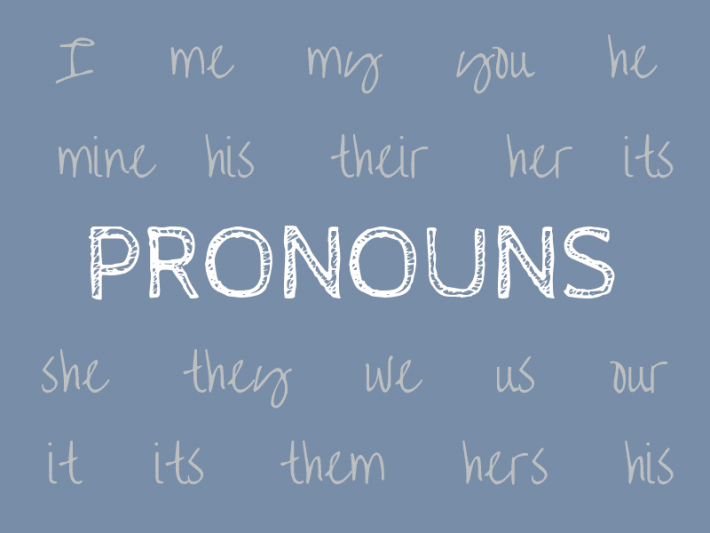
What are pronouns? They are words such as I, we, them, they, he, she, us, it, etc. Pronouns can be used to replace the noun(s) in a sentence.
For example, you could start with the following sentence:
“Jim loves going to the gym.”
I could change Jim to the pronoun he.
“He loves going to the gym.”
How about this longer example?
“Jim prefers to stay in shape and eat healthily. Jim tries to go to the gym at least three times a week.”
Instead of repeating or starting both sentences with Jim, I could change the second Jim to he since we already know who the he would represent.
“Jim prefers to stay in shape and eat healthily. He tries to go to the gym at least three times a week.”
What about pronoun agreement? This is an issue… or should I say gray area I come across very often.
So, pronoun agreement is used to confirm the pronouns used are in agreement with the nouns of the writing. This means that if the noun in the sentence is singular then you’d want to provide a pronoun in a singular tense.
For example:
“Brian and Bill went to the bowling alley.”
In this example, there are two main characters = plural. So, I’ll need a plural pronoun.
Depending on the point of view and what tense it is written in, I could change this to one of two plural pronouns.
For example:
“They went to the bowling alley.”
“We went to the bowling alley.”
Make sense?
Okay, when I started this section, I mentioned pronoun agreement as having a gray area. I’ve come across this area many times, and it seems to be pretty common. What am I talking about?
Using certain plural pronouns such as they, them, and their in a singular way.
Look at this example:
“Somebody left their coffee cup on the table.”
Somebody is a singular noun, while their is a plural pronoun (in this context), so one would think they wouldn’t be in agreement.
How can a single noun and plural pronoun be in agreement? This is the gray area I mentioned. Basically, even though we know somebody means a single person, we don’t know if this person is a male or female. So, what do you do in that situation?
How about this?
“Somebody left his or her coffee cup on the table.”
This sentence makes sense, right? Sure, it does! But what if we added more to this example…
“Somebody left his or her coffee cup on the table. I wonder if he or she will come back for it? If not, hopefully, he or she won’t mind me taking it home.”
Notice a problem now? These three little sentences are repetitive when it comes to the person in the example. While referring to something as being his or hers or someone as being he or she the one time, it starts to become a little too much as the above example shows. This is where the plural pronoun can come in handy.
Now, look at the example after it has been “gray area-ed.”
“Somebody left their coffee cup on the table. I wonder if they’ll come back for it? If not, hopefully, they won’t mind me taking it home.”
Notice the differences?
By either simply changing some of those singular pronouns to they or their or even rewriting the passage, it will allow for a more natural flow of words. Try to find an example of this the next time you read a book. I’m 100 percent sure you’ll come across at least one.
Here’s a page with a little more information regarding the gray area in pronoun agreement: https://www.grammarly.com/blog/use-the-singular-they/
Pronoun ambiguity is the next area I’ll talk about. Pronoun ambiguity is when a sentence contains a pronoun and it isn’t clear who or what the pronoun is referring to.
For example:
“The cat ran down the stairs into a dark figure. It jumped back and changed directions.”
It is the pronoun in this case. Yet, it is unclear whether it is referring to the cat or the dark figure. Right? One might assume it was the cat that jumped back and changed directions, but since that sentence comes right after the mention of the dark figure, you never know.
What about this one?
“Marcy and Barbara went shopping together. As they neared the door to the first store, she opened it.”
Who opened it? Marcy or Barbara? It’s unclear who opened the door. See what I’m talking about with pronoun ambiguity? I feel it’s pretty self-explanatory.
In both of these examples, it’s probably best to stick with the proper/common nouns to make it clear who is doing what in the second sentence.
I hope you have found this blog useful. If you have any questions, comments, concerns, jokes, funnies, please feel free to contact me. Thanks for reading!